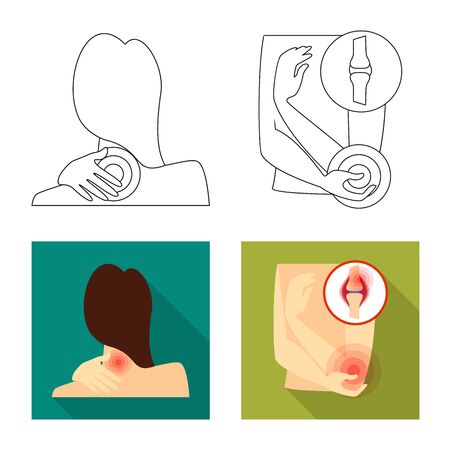What is Dysphagia?
Dysphagia is a medical term that means difficulty swallowing. Swallowing is something most people do without thinking, but for those with dysphagia, it can be hard or even painful to move food, liquids, or even saliva from the mouth to the stomach. In the United States, dysphagia affects millions of people each year and can happen at any age, though it is more common among older adults.
Why Is Dysphagia an Important Health Concern in the United States?
Dysphagia is more than just an inconvenience—it can lead to serious health problems. People with dysphagia may not get enough nutrition or fluids, which can cause weight loss, dehydration, or malnutrition. Theres also a risk of food or liquid “going down the wrong pipe” (aspiration), which can lead to choking or lung infections like pneumonia. In fact, aspiration pneumonia is a major concern for people with swallowing difficulties in the U.S., especially for seniors in hospitals and nursing homes.
Who Can Be Affected by Dysphagia?
| Group | Examples |
|---|---|
| Older Adults | Aging-related muscle weakness or neurological conditions like stroke or Parkinson’s disease |
| Children | Developmental disabilities or congenital conditions |
| People with Chronic Illnesses | Cancer (especially head and neck), multiple sclerosis, ALS (Lou Gehrig’s disease) |
| Post-Surgery Patients | Especially after throat, neck, or esophagus surgeries |
Quick Facts About Dysphagia in America:
- Affects up to 1 in 25 adults every year in the U.S.
- Can lead to increased healthcare costs due to complications and hospitalizations.
- Early detection and proper management are key for improving quality of life.
Dysphagia isn’t always obvious at first. Some people might cough while eating or drinking, have a hoarse voice after meals, or feel like food gets stuck in their throat. Because these symptoms can be subtle, many Americans don’t realize they have a swallowing problem until it becomes severe. That’s why understanding what dysphagia is and recognizing its signs is so important for individuals and families across the country.
2. Common Causes of Dysphagia
Dysphagia, or difficulty swallowing, can affect people of all ages in the United States. There are several common causes that can be grouped into three main categories: medical conditions, neurological disorders, and structural issues. Understanding these causes helps healthcare providers figure out the best way to help someone with dysphagia.
Medical Conditions That Can Lead to Dysphagia
Many health problems can make swallowing difficult. Some of the most frequent medical reasons include:
| Medical Condition | How It Causes Dysphagia |
|---|---|
| Gastroesophageal Reflux Disease (GERD) | Stomach acid backs up into the throat, causing irritation and swelling. |
| Cancer (Throat, Esophagus, Head and Neck) | Tumors or cancer treatments may block or narrow the swallowing pathway. |
| Infections | Severe throat infections can cause swelling and pain when swallowing. |
| Aging | Natural aging weakens the muscles involved in swallowing. |
Neurological Disorders Affecting Swallowing
The brain and nerves play a big role in swallowing. When they dont work right, it can lead to dysphagia. Common neurological causes include:
| Neurological Disorder | Description |
|---|---|
| Stroke | A stroke can damage parts of the brain that control swallowing muscles. |
| Parkinsons Disease | This progressive disease slows muscle movements, including those needed for swallowing. |
| Multiple Sclerosis (MS) | Nerve damage from MS can disrupt signals to swallowing muscles. |
| Amyotrophic Lateral Sclerosis (ALS) | This condition weakens all voluntary muscles over time, including those used for swallowing. |
| Dementia/Alzheimer’s Disease | Cognitive decline makes coordinating the steps of swallowing difficult. |
Structural Issues Leading to Dysphagia
Sometimes, physical changes or injuries in the mouth, throat, or esophagus cause dysphagia. Examples include:
- Esophageal Strictures: Narrowing of the esophagus due to scar tissue or inflammation can block food passage.
- Esophageal Rings/Webs: Thin growths that partially block the esophagus.
- Surgery or Injury: Operations on the neck or throat, or injuries from accidents, may damage structures needed for swallowing.
- Cleft Palate: A birth defect where the roof of the mouth doesn’t form properly, making it hard to swallow safely.
- Dental Problems: Missing teeth or poorly fitting dentures can make chewing and moving food harder.
Dysphagia in Everyday American Life
No matter the cause, dysphagia can impact daily routines—like eating meals with family or enjoying a favorite snack. If you notice trouble swallowing or frequent coughing while eating, its important to talk with your healthcare provider so they can help find out whats going on.

3. Recognizing the Symptoms
Dysphagia, or difficulty swallowing, can show up in different ways depending on your age and overall health. Knowing what to watch for is important so you can get the right help as soon as possible. Below, we describe some of the common warning signs and symptoms for children, adults, and older adults in the United States.
Common Symptoms of Dysphagia
| Age Group | Typical Warning Signs |
|---|---|
| Infants & Children |
|
| Adults |
|
| Seniors (65+) |
|
What Should You Do If You Notice These Symptoms?
If you or someone you care for shows any of these signs—especially if they happen often—it’s a good idea to talk with a healthcare provider. In America, primary care doctors can refer you to specialists like speech-language pathologists (SLPs) or gastroenterologists who can assess swallowing problems more closely.
Why Early Recognition Matters
Catching dysphagia early can help prevent complications such as choking, aspiration pneumonia, and poor nutrition. Don’t ignore these symptoms—getting help sooner makes treatment easier and improves quality of life.
4. Diagnosis and Evaluation Methods
Diagnosing dysphagia in the United States involves a combination of screenings, clinical assessments, and specialized tests. U.S. healthcare providers use a variety of methods to determine the cause and severity of swallowing difficulties, ensuring patients receive appropriate care as early as possible.
Common Screening Tools
Initial screenings for dysphagia are often performed by nurses or speech-language pathologists (SLPs) in hospitals, clinics, or long-term care settings. The goal is to quickly identify individuals who may need further evaluation. Some commonly used screening tools include:
| Screening Tool | Description | Where Used |
|---|---|---|
| Bedside Swallow Assessment | A quick check to see if a person has trouble swallowing water or food | Hospitals, nursing homes |
| 3-Ounce Water Swallow Test | The patient drinks 3 ounces of water without stopping while being observed for coughing or choking | Emergency rooms, inpatient settings |
| Dysphagia Screening Questionnaires | Simple questions about swallowing problems, coughing during meals, or voice changes after eating | Primary care clinics, senior centers |
Clinical Assessments by Specialists
If a screening suggests possible dysphagia, a more detailed clinical assessment is performed. This is usually done by an SLP or an occupational therapist. They will:
- Review the patient’s medical history and current symptoms
- Observe how the patient eats and drinks different types of food and liquid textures
- Check for signs like coughing, throat clearing, or changes in voice quality after swallowing
- Assess oral motor skills such as tongue movement and strength
Specialized Diagnostic Tests
To get a clear picture of what’s happening during swallowing, doctors may order advanced diagnostic tests. These help pinpoint where the problem is occurring—whether it’s in the mouth, throat, or esophagus.
| Test Name | Description & Purpose | Typical Setting |
|---|---|---|
| Modified Barium Swallow Study (MBSS) | X-ray video taken while the patient swallows food and liquid mixed with barium; shows how well different parts of the swallowing process work | Radiology department with SLP present |
| Fiberoptic Endoscopic Evaluation of Swallowing (FEES) | A thin camera is passed through the nose to view throat structures while swallowing; helps spot aspiration (food/liquid going down the wrong way) | Outpatient clinics, hospitals with ENT specialists or SLPs trained in FEES |
| Esophageal Manometry & pH Testing | Sensors measure muscle pressure and acid in the esophagus; identifies motility issues or reflux that may contribute to dysphagia symptoms | Gastroenterology departments or specialty clinics |
| Upper Endoscopy (EGD) | A flexible scope examines the esophagus lining for inflammation, strictures, or other structural problems contributing to swallowing trouble | Surgical centers or gastroenterology clinics under sedation |
The Team Approach in U.S. Healthcare Settings
Dysphagia diagnosis often involves a team approach. Speech-language pathologists work closely with doctors (such as primary care physicians, ENTs, and gastroenterologists), nurses, dietitians, and sometimes occupational therapists. This ensures that all aspects of swallowing—physical ability, nutrition, safety, and underlying medical conditions—are addressed in a coordinated way.
5. When and Where to Seek Help
Recognizing the Right Time to Consult a Professional
If you or someone you care for is experiencing trouble swallowing, it’s important to know when to reach out for help. In the United States, you should consider consulting a healthcare provider if you notice:
| Symptom | What It Means |
|---|---|
| Frequent coughing or choking while eating | This could signal food or liquid entering the airway. |
| Sensation of food sticking in the throat or chest | You may have an obstruction or narrowing in your esophagus. |
| Unexplained weight loss | Trouble swallowing can make it hard to get enough nutrition. |
| Pain while swallowing | This might point to inflammation, infection, or injury. |
| Recurrent pneumonia or chest infections | This can happen if food or liquid enters your lungs. |
How to Access Speech-Language Pathologists (SLPs)
Speech-language pathologists, often called SLPs, are specialists who evaluate and treat swallowing disorders like dysphagia. Here’s how you can connect with an SLP in the U.S.:
- Primary Care Physician (PCP): Start by telling your family doctor about your symptoms. They can refer you to an SLP if needed.
- Direct Access: In many states, you can contact SLPs directly without a physician referral, especially if you have private insurance. Check your state regulations and insurance plan.
- Hospital or Rehabilitation Centers: If you’re hospitalized, SLPs are often part of the care team and may see you automatically if swallowing problems are suspected.
- Outpatient Clinics: Many clinics and therapy centers offer outpatient appointments with SLPs specializing in swallowing disorders.
The Role of Medical Insurance in the U.S.
Navigating health insurance can be confusing, but here are some key points about coverage for dysphagia evaluation and treatment:
| Type of Insurance | Covers Dysphagia Services? | Referral Needed? |
|---|---|---|
| Medicare/Medicaid | Usually covers medically necessary SLP services | Referral from PCP typically required |
| Private Health Insurance | Covers SLP services depending on your plan; check specific benefits | May or may not require referral; check with your insurer |
| No Insurance/Self-Pay | You can still access services, but will pay out-of-pocket; ask about payment plans or sliding scale fees | No referral needed unless required by clinic policy |
If You’re Not Sure Where to Start…
If you’re unsure how to find help, start with your primary care provider. They can guide you on next steps and help coordinate referrals so that you get the right care as quickly as possible. Remember, early evaluation and intervention can make a big difference in managing dysphagia effectively.


